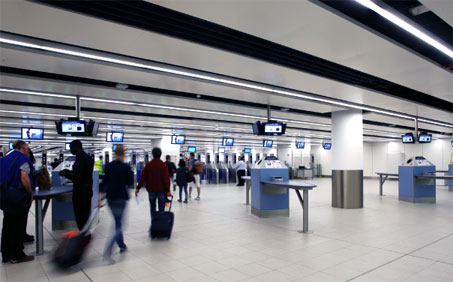
A phased approach to lifting the LAGs restrictions will begin in January 2014. The first phase is designed to test the operational impact of screening LAGs.
Restrictions on carry-on liquids have perhaps had the single most profound impact on the passenger experience since their initial introduction in 2006. Last July, the European Commission announced the postponement of the April 2013 deadline for the removal of all LAGs restrictions. The Commission noted, in its report to the European Parliament’s Transport & Tourism Committee and also the European Council in July 2012, that the April 2013 deadline presented an operational risk because of the scale of change.
ACI EUROPE supported the postponement, as trials undertaken at several European airports indicated that the technology is not yet robust enough to improve rather than detract from the passenger experience. The consistent position of ACI EUROPE has been that any removal of the restrictions must be based on a sustainable technological solution that ensures a high degree of probability of detection of a wide range of liquid explosives, as well as being passenger-friendly.
Following the postponement, a roadmap has been developed for the progressive removal of the LAGs restrictions. The first phase, from January 2014, is designed to test the operational impact of screening LAGs. It involves a limited range of liquids and is expected to have a minimal impact on airport screening operations based on the existing level of LAGs carried by passengers. The second phase will be contingent on the acceptable implementation of the first phase. The phased approach will provide airports and manufacturers with valuable operational experience before the restrictions are fully lifted.
Marjeta Jager, Director for Security at the European Commission’s Directorate-General for Mobility and Transport, welcomed the new legislation. “As a regulator I am very pleased that the successful cooperation we enjoyed last year with aviation stakeholders led to this mutually agreed phased approach. This is needed because replacing restrictions by screening is a challenge for security operations at airports. Air passengers should be given back the possibility of carrying liquids, especially today when technology can deliver an alternative security solution. With the new legislation now in place we are looking forward to seeing airports deploy screening equipment in good time to allow this first phase to be fully implemented by 31 January next year. Together with our stakeholders we will continue to follow the agreed roadmap towards full lifting of restrictions over the next few years, as signed in the Statement of Intent on LAGs in July 2012.”
Duty free LAGs
A major benefit of the rules to be introduced in January 2014 is that all passengers will be able to carry their duty free LAGs purchases in ICAO specification Security Tamper Evident Bags (STEBs) when transferring through EU airports; the LAGs will be subject to screening before the traveller boards their next flight. While EU LAGs in STEBs have always been screened using conventional equipment, from January 2014 airports will have dedicated equipment, allowing those transferring at EU airports to keep their duty free liquids. This change in equipment is the only discernable difference passengers may notice following the introduction of the new rules. Importantly, the new rules have been adopted in coordination with major EU trading partners, including the US, Canada and Australia. Passengers from the EU will be able to carry their LAGs in STEBs when transferring in those countries.
On the basis of experience gained from the first phase, the European Commission will review the situation by the end of 2014. It will then define the next steps in close cooperation with relevant industry stakeholders, if possible within two years of the first phase.







